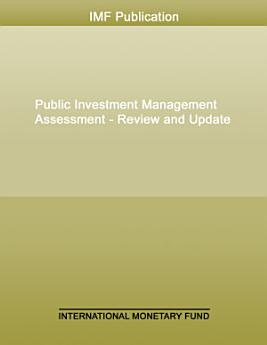Public Investment Management Assessment - Review and Update
International Monetary Fund. Fiscal Affairs Dept.
Mei 2018 · International Monetary Fund
4.0star
Maoni 2report
Kitabu pepe
31
Kurasa
reportUkadiriaji na maoni hayajahakikishwa Pata Maelezo Zaidi
Kuhusu kitabu pepe hiki
"Public Investment Management Assessments (PIMAs) are the IMF‘s key tool for assessing infrastructure governance over the full investment cycle and supporting economic institution building in this area. The PIMA framework was first introduced in the 2015 Board Paper on “Making Public Investment More Efficient,” as part of the IMF’s Infrastructure Policy Support Initiative (IPSI). A key motivation for its development has been that strong infrastructure governance is critical for public investment to spur economic growth. PIMAs offer rigorous assessment of infrastructure governance, that is, the key public investment management (PIM) institutions and processes of a country. On the basis of the PIMAs conducted to date, this paper summarizes the lessons learned and updates the assessment framework itself. PIMAs summarize the strengths and weaknesses of country public investment processes, and set out a prioritized and sequenced reform action plan. The PIMA framework has been well-received by member countries, with over 30 PIMAs conducted to date (mainly in emerging markets (EMs) and low income developing countries (LIDCs), and a pipeline of new requests in place; eight PIMAs have been or are about to be published. The PIMAs conducted show that there is much room for strengthening PIM, with weaknesses spread across the investment cycle. The results and recommendations of several PIMAs have been used in IMF lending, surveillance, and capacity development (CD) work, and have improved support and coordination among CD providers. While leaving the structure of the 2015 framework unchanged, the revised PIMA framework highlights some critical governance aspects more prominently. In particular, it brings out more fully some key aspects of maintenance, procurement, independent review of projects, and the enabling environment (e.g., adequacy of the legal framework, information systems, and staff capacity). Yet, the revised PIMA retains the key features of the 2015 framework, including the three-phase structure (planning, allocation, and implementation) with five institutions assigned to each phase, three dimensions under each institution, and three possible scores under each dimension (i.e., not/partially/fully met). The revision has benefitted from extensive stakeholder feedback, including from IMF teams, World Bank staff, and country authorities."
Ukadiriaji na maoni
4.0
Maoni 2
Kadiria kitabu pepe hiki
Tupe maoni yako.
Kusoma maelezo
Simu mahiri na kompyuta vibao
Sakinisha programu ya Vitabu vya Google Play kwa ajili ya Android na iPad au iPhone. Itasawazishwa kiotomatiki kwenye akaunti yako na kukuruhusu usome vitabu mtandaoni au nje ya mtandao popote ulipo.
Kompyuta za kupakata na kompyuta
Unaweza kusikiliza vitabu vilivyonunuliwa kwenye Google Play wakati unatumia kivinjari cha kompyuta yako.
Visomaji pepe na vifaa vingine
Ili usome kwenye vifaa vya wino pepe kama vile visomaji vya vitabu pepe vya Kobo, utahitaji kupakua faili kisha ulihamishie kwenye kifaa chako. Fuatilia maagizo ya kina ya Kituo cha Usaidizi ili uhamishe faili kwenye visomaji vya vitabu pepe vinavyotumika.








